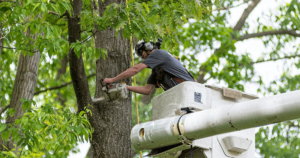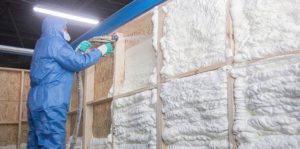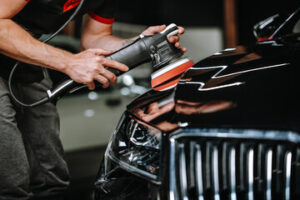Kitchen Remodel Temecula is a major project involving everything from updating faucets and changing out appliances to knocking down walls and creating a whole new footprint. Unless you’re a skilled DIYer, this work is best left to professionals.
This phase will also include laying new flooring, typically laminate or hardwood. It’s important to make contingency plans for food during this time, as your kitchen won’t be functional until the project is complete.

When it comes to kitchen remodels, the layout is one of the most crucial elements that will affect your finished space. The layout determines where cabinets and appliances go, whether or not you have room for a dining table and other fixtures and how well the room works as an open-plan space. It also influences the style you’re going for and how you use your kitchen. For example, do you want your cooktop and sink to be directly facing each other or would you prefer to have them separated so you can easily chat with guests as you prepare food?
The most popular kitchen layout is an L-shaped design, which places cabinets along two adjoining walls. This versatile option is a good choice for any sized kitchen and pairs well with most design aesthetics. You can further enhance an L-shaped kitchen by adding a pantry, breakfast nook or island.
Other popular kitchen layouts include a U-shaped design, which places cabinets on three walls. This is a good choice for larger kitchens and allows you to incorporate a peninsula that can be used for seating or extra storage. You can also add a center island to this layout to create an efficient work zone.
A galley kitchen is another common layout that’s great for smaller spaces. This arrangement places cabinets and appliances along two adjacent walls and leaves a small pass-through corridor in between.
You can further optimize a galley kitchen by combining it with an L-shaped layout to create an efficient work zone and open-plan space.
It’s important to consider how your kitchen will be used before choosing a layout as this will help you select the right cabinets and other features that will make it functional and aesthetically appealing. It will also help you decide if you’ll need to make any structural changes such as extending your cabinets or knocking down walls for an open-plan design.
If you plan to make substantial structural changes, it’s recommended that you hire a general contractor with experience in kitchen remodeling. This will ensure the project is completed properly and efficiently, saving you money in the long run. A reputable general contractor will have a network of subcontractors that they work with regularly, which can further lower the cost of your Gainesville kitchen remodel.
Cabinets
Cabinets are one of the most significant expenses in a kitchen remodel. They can be purchased prefabricated with a range of design options or custom built to meet your exact specifications. The first decision is the style and color — whether you are refacing your existing cabinets, getting new ones or designing a custom set. White is the most popular color, followed by various shades of wood stains. Color trends for 2020 also include blue, green and grey. Deciding on a color palette early on will make it easier when selecting other elements such as countertops, appliances, wall colors and flooring.
Next, consider how you want to use the space and what features you would like in your cabinetry. Special drawers for pots and pans or large baking sheets, lazy Susans, a hidden trash bin or a space for recycling can all add functionality to your kitchen. There are a variety of door styles and finishes to choose from as well. Whether you want an antique look, a traditional face frame, or a contemporary inset design, there are many options available to suit your style and budget.
The size of your kitchen will also impact cabinet cost. A larger kitchen will require more storage solutions which will increase the cost of your project. Also, the amount of cabinetry you need will determine the type of construction and material used. For example, solid wood cabinets will be more expensive than particle board or MDF.
Finally, your remodeling contractor will factor in labor costs and any necessary permits to complete the job. This will help you determine your total project cost and the budget that you should start with. A professional contractor will be able to estimate the work time required for your kitchen remodel and provide an accurate quote.
The best way to keep your kitchen remodel costs under control is to stick to a basic design that will appeal to a broad range of home buyers. A high-end design may be less appealing to potential home buyers and could slow or derail your project. You can still infuse personality into your kitchen by choosing eye-catching accents such as a colorful backsplash, funky drawer handles or a sink faucet with the perfect metallic finish.
Appliances
A kitchen remodel is the perfect time to invest in new appliances. This will allow you to upgrade to state-of-the-art units that are both stylish and functional, providing a positive daily experience and increasing the value of your home.
However, the cost of new appliances can vary widely depending on the brand and features you choose. As a rule of thumb, you should budget 15-20% of your total kitchen remodel budget for appliances. This will ensure that you get the best possible results without overspending.
Whether you are a homeowner looking to make a big splash with your kitchen remodel or simply want to replace older units, it is important to carefully consider the type of appliance you need to accommodate your lifestyle and cooking style. Often, it is more cost-effective to upgrade to larger appliances that offer space-saving design or energy efficiency. This will also help you to achieve a cohesive design, while eliminating the need for oversized cabinets and other costly structural modifications.
If you are remodeling your kitchen and changing the layout, it is also a good idea to determine where your new appliances will be located before making any purchasing decisions. For example, if you decide to mount your microwave over the range rather than on the wall, your designer will need to know this information early in the planning process. This will allow them to design a custom cabinet hood or other stylish option that can double as an exhaust vent.
As you are shopping for appliances, be sure to take into account their warranty, color options, and overall quality. You may also wish to look for models that include features such as touch-screen controls, built-in coffee makers, and integrated dishwashers. These items will add a premium look to your kitchen and can make your cooking and cleaning tasks more efficient.
A well-planned kitchen remodel can transform your space into a beautiful, functional space that meets all of your needs. From cooking and entertaining to everyday living, you can enjoy your kitchen for years to come. Then, when it is time to sell your home, you will have the added benefit of knowing that a modern, well-designed kitchen will appeal to potential buyers.
Finishing Touches
Once you’ve made decisions about the layout, cabinet color, and appliances, it’s time to start thinking about the small details that will tie everything together. Kitchen finishing touches can be the most fun part of a kitchen remodel, giving you the chance to inject personality and extra functionality into your new space.
Backsplashes are an easy way to add color and texture to your kitchen. Choose a tile that complements your countertops and cabinets for a cohesive look. You can also opt for a bold pattern or unique material to make a statement. For a modern design, consider a back-painted glass backsplash or a mosaic tile that will light up your room.
Another easy kitchen finishing touch is to replace cabinet hardware. This is an inexpensive way to give your space a big style boost. There are so many different knobs, handles, and pulls in a variety of styles and materials that you’re sure to find one that fits your personal aesthetic.
Other finishing touches include kitchen lighting and window treatments. For kitchen lighting, pendant lights over an island or dining table are a classic and stylish choice. They can also help create an open and airy feel, making your kitchen more spacious.
For kitchen window treatments, valances are an excellent option. They allow for maximum customization and are often more affordable than other options, including blinds. Unlike other window treatments, kitchen valances should permit the sun to shine through, creating a beautiful glow that will brighten your kitchen.
A kitchen remodel can be a major undertaking, but with careful planning and the right professionals, it can transform the heart of your home into an efficient and functional space that you’ll love for years to come. Contact a trusted remodeling contractor to ensure that your kitchen renovation is both successful and stress-free.
Kitchen Solvers is a full-service kitchen remodeler that offers custom solutions to fit your budget, lifestyle, and design preferences. We provide expert advice and guidance throughout the entire process to help you create a kitchen that’s both functional and beautiful.






